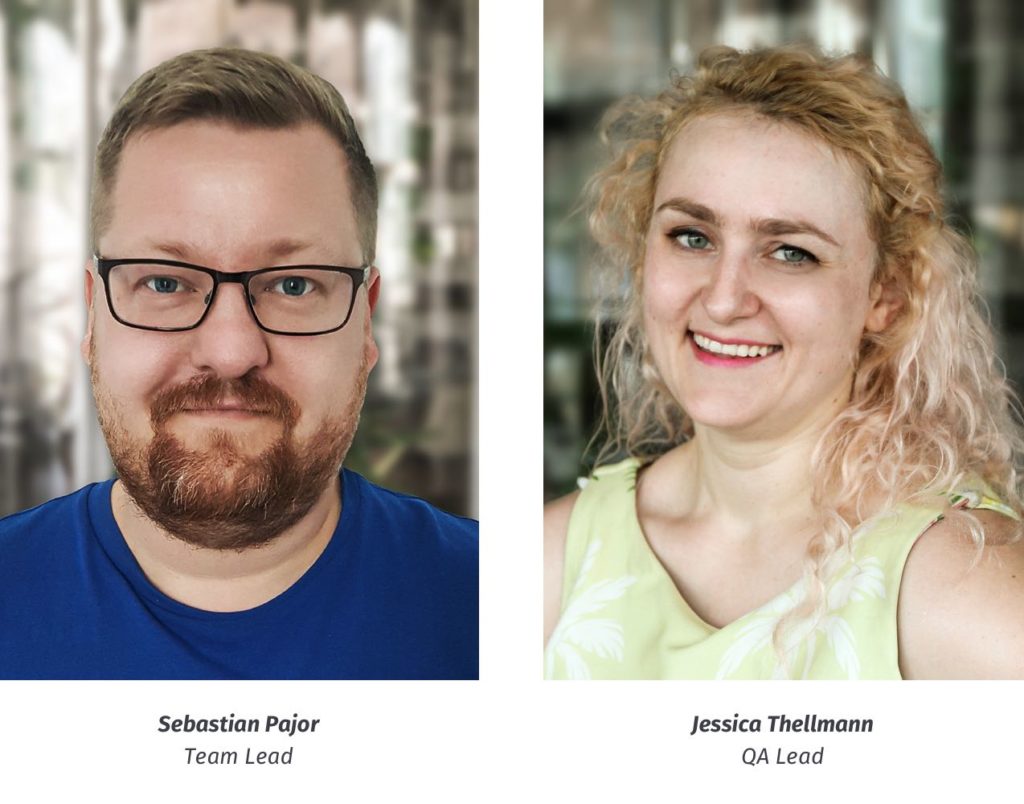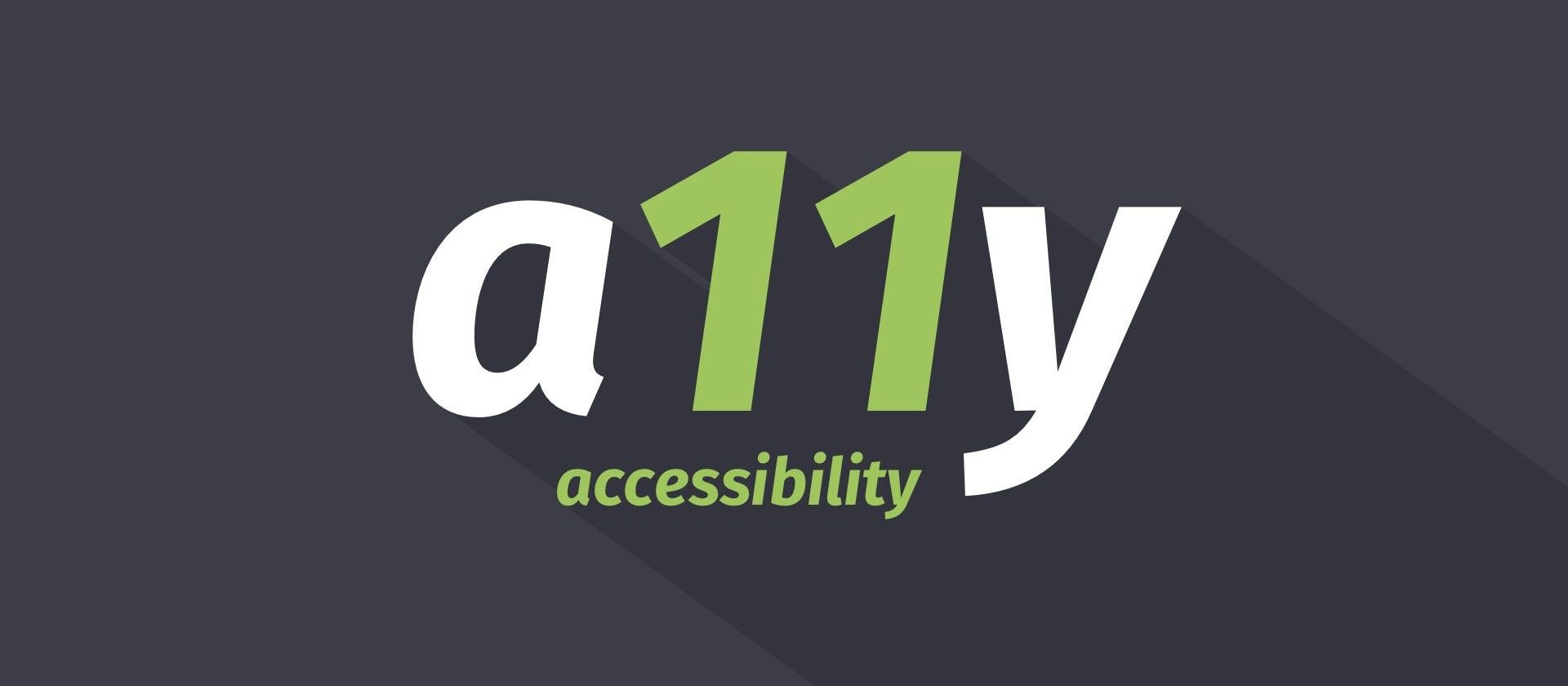The topic of Web Accessibility (A11y) is multifaceted as it plays a role in many different fields such as web design, QA and web development and shows very different perspectives depending on the point of view. Even if A11y has not yet reached every corner of the Internet, the topic is becoming more and more present. This can be seen well in initiatives such as Simon Kraft’s Project, who collects contributions to the topic from the WordPress community in the WP Letter.
In this article, we give an insight into A11y from the perspectives of QA and web development. Our WordPress experts Sebastian Pajor (Teamlead at Inpsyde) and Jessica Thellman (QA Lead at Inpsyde) report about their experiences with accessibility on the web.

What is A11y?
The World Wide Web is supposed to connect all of us, but do we really communicate worldwide without borders? If I can’t read the content of a website because I don’t know the language, I’m blind, or simply because my device isn’t supported, that puts me at a limit. Fortunately, there are many useful tools and functions. With translation tools, responsive web design, screen readers, voice recognition and closed capturing some borders can be overcome. But only if they are used correctly. But this is not only the responsibility of the tool users.
A11y stands for accessibility and guaranteeing it to all users. Especially on the web, this includes not only accessibility in the classical sense, but also overcoming language barriers and a user interface that can be easily operated by anyone. Keyword: Usability. The overall goal of A11y is to make websites and the Internet in general usable for as many people as possible in as many contexts as possible.
What role does accessibility play on the Web 2020?
Accessibility for Enterprise: A11y vs. UX/UI
Although the topic of accessibility is becoming more and more popular, A11y and especially freedom of barriers are often no priority in website projects. Customer requirements are instead more focused on user experience (UX) and user interface (UI).
UX design tries to make the use of a website or app as comfortable and pleasant as possible. If the visitor of a website can easily find what he or she is looking for, can use the interface intuitively and thus has a good “website experience”, then the UX designer has done a good job. The user interface, in this case the control elements of a website such as menus, play an important role to achieve a good User Experience.
The average customer has one main goal in this context: the content of the website should look good and be accessible on all end devices.
“If accessibility is desired, then usually by larger companies that have stakeholders who demand it, and at the same time the financial resources to implement it. It is a question of priority: Is it worth the investment to ensure that all people can consume my content? I see that most companies are only superficially concerned with the topic and pay more attention to design, presentation on different devices and SEO.”
Sometimes, I have the feeling that websites are more tailored to Google or SEO than to people.
Sebastian Pajor, Teamlead at Inpsyde
A11y in web development: challenges and opportunities
Has A11y already arrived in web development? Inpsyde Teamlead Sebastian Pajor gives an insight:
“In today’s web development, the main question with regard to A11y is: What information do we need on which end devices and for which users? And accordingly: what are the requirements in development?“
“Regardless of the A11y idea, it is already a challenge to adapt content such as texts, videos, sliders and menus for all kinds of end devices. It is practically impossible to provide a perfect A11y. A big challenge are the many different devices like mobile phones, tablets, and desktop PCs. But also SEO algorithms can make things complicated. But a good A11y is not impossible ‒ with the right priorities and resources.”
It’s like everything else. When you have a professional at work, you can make it all happen. It always depends on the priorities you set.
Sebastian Pajor, Teamlead at Inpsyde
“When planning projects, we therefore make sure that we advise our customers accordingly. Because often the focus is on many new website functions and little thought is given to usability and accessibility. As a WordPress agency, it is our own claim to not only deliver the best code quality but also to guarantee the best possible usability and user experience. Of course, the topic accessibility plays a role in this. WordPress as a CMS offers good prerequisites here, as it can be extended by plugins and is generally very changeable.”
A11y and WordPress:
If you want to provide content, then WordPress is the best CMS.
Sebastian Pajor, Teamlead at Inpsyde
But also in terms of A11y? Yes! Because WordPress offers some advantages for A11y that website building kits and other CMS do not have:
User-friendly Backend and Plugins
WordPress provides a clear and intuitive backend, which can be easily used even by non-experts in web development.
In addition, your own WordPress website can be extended with many different plugins covering all possible features and thus be adapted to individual needs and wishes. Therefore, WordPress offers good conditions for website operators who want to provide A11y to their users.
WordPress = Open Source = Open Mindset
WordPress is an open-source project. Therefore, not only a few developers work on improving the CMS, but a whole community. This means that a lot of people with individual needs and demands are shaping the future of WordPress. Topics such as accessibility and freedom from barriers are therefore a must.
In the WordPress community, even an Accessibility team has been formed. In addition, there are often discussion groups on the topic at the worldwide WordCamps where the community meets. Here, solutions and ideas on the topic A11y are actively worked on.
A11y in the field of Web QA
Accessibility is also an important topic in the field of quality assurance. As a link between customers and developers, one of the tasks of QA is to test the usability, i.e. the usability of a website in general from the user’s point of view. This ensures that introduced features such as search boxes and menus work as intended and are intuitive to use. Inpsyde QA Lead Jessica Thellman shares her view on the topic A11y:
“In the QA of a web agency, you work as close to the customer as possible. Direct communication is very important. Because only in this way, you can gain an insight into the customer’s needs and the resulting opportunities. With this knowledge, test systems for quality assurance can be developed that ensure a good overall result.”
A11y and QA: Difficulties and opportunities
The biggest difficulty is that the user experience always depends on the individual user.
Jessica Thellman, QA Lead at Inpsyde
“For example: If I need to test whether a website is displayed in a proper way for users with a certain color blindness, I can hardly do this without the feedback of a color-blind user. So, the key to a good result is communication. This makes it difficult to automate such tests, so it has to be tested manually or through the feedback of the user. This is, of course, more time-consuming and therefore more cost-intensive. And that is a problem because many website operators have different priorities or simply do not have the necessary financial means to ensure accessibility.”
“From my point of view, however, one could actually add a few features as standard on every website without too much effort, e.g. different color palettes for people with different color perceptions. Especially important messages such as an error during a payment process could otherwise easily escape notice. There are also tools such as screen readers, but they only work properly if the respective website is set up correctly. For example, such readers read out the alt texts of images. But of course only, if such an alt text is set.”
“I hope that in the future there will be more and better ways to ensure accessibility for all users. We are certainly moving in the right direction. Website content gets more and more often individually adapted to the user. Keyword: dynamic content. I see the next big step in user interfaces on websites that can be adapted by the user. This would allow everyone to create their own web experience according to their personal needs. In my opinion, that would be the basis for a perfect A11y.”
Is A11y worth it?
Yes. Of course, it’s always a question of cost. And of course, it will always be “expensive” to implement some additional features for just a few people. But accessibility and thus freedom of barriers should undoubtedly be part of the standard of any professional web presence.
And hand on heart: A barrier-free web, whether backend or frontend and a user experience independent of language, culture and individual needs are pricelessly valuable ‒ for all humankind.

Failed to submit:
one or more fields are invalid.